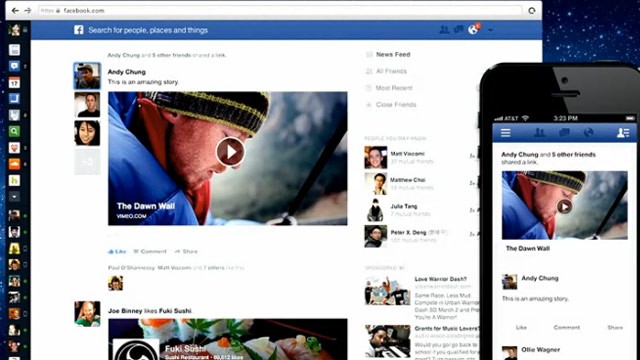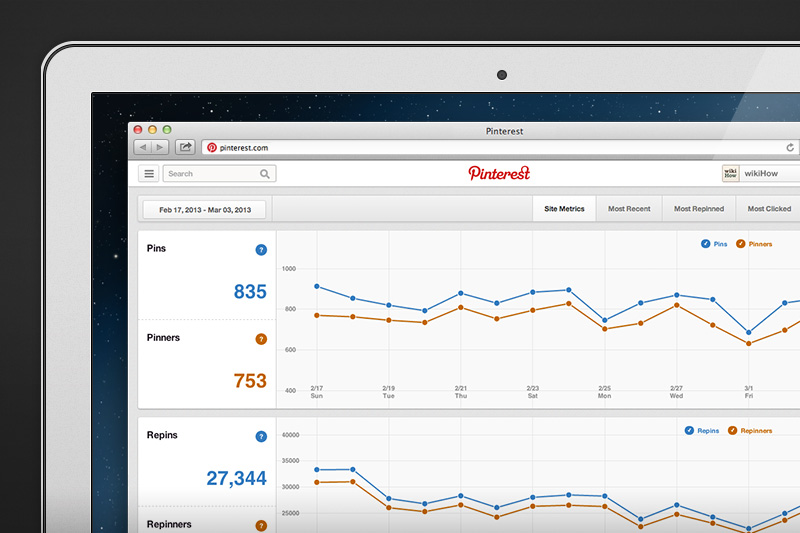By Nick Johnson - March 13th, 2013
This week, we review the reaction to Facebook's new redesign, take a closer look at Pinterest's analytics, and look at Microsoft's view of Likes, and Subway's social currency
This week's update reviews Facebook's new newsfeed and what it means for you, Pinterest's new analytics platform, and some detail on Microsoft, Subway and Target's approach to social media measurement.
The new news feed is here - why should you care?

Unless you've been living under a rock, you'll know Facebook's news feed redesign is imminent. In the fast-paced world of social media, the 7-year gap between the last redesign and this one is an eternity. Brands have been increasingly excited about what new opportunities the refresh gives them.
Well, now we know.
Bigger Ads: Brands have been asking Mark Zuckerberg for more engaging, attention-grabbing and richer advertising opportunities for a while now. Unsurprisingly, considering the company's travails since their IPO, they've acquiesced.
Sort of. Ads are bigger. A LOT bigger. That in itself is a good thing for a brand looking to shout about itself, but that's one of many ways to leverage Facebook as a marketer. There isn't an enormous amount more in terms of functionality that wasn't there before.
Saying that, there is more Pinterest integration, which is a good thing in terms of e-commerce. Equally, Facebook's broader shift towards a content provider (Zuckerberg repeatedly referred to the site becoming a 'newspaper') is good news - content marketing gets a shot in the arm.
More mobile consistency: The company spent a good chunk of their presentation talking about smartphones, tablets and desktops. For a while now, the iOS and browser-based versions of the site were markedly different. The company have now got rid of a lot of the 'chrome' around the content, and removed as many distractions from content as they could. This is only a good thing for a brand with engaging content to share. But bad for those with weak content - you'll get found out that much more quickly.
The increased consistency between browser/mobile versions of the site will remove a few headaches for marketers though - no more worrying about exactly how an ad will play on a computer screen versus an iPhone screen.
More risk and pressure: Facebook have acquiesed to the requests from brands for bigger ads - but while they give with one hand, they take away with another. Because - with the addition of specific streams - your customers can choose to cut you from their Facebook experience altogether. The 'Friends Only' feed mean that consumers remove all Like and App-based content from their stream - focusing solely on activity from actual friends.
It ratchets up the pressure still further. If your content - or, perhaps more worryingly, content from business in general - isn't of a high enough quality, then consumers will increasingly use the 'Friends Only' feed as their default Facebook location.
Obviously if that were the case, Facebook would find another way to get your message out there - but there will be a fair amount of headaches before that happens.
For more on this, check out this comprehensive look at the changes to the News Feed, and TechCrunch's article on potential impacts for brands.
But hey, should you care about Facebook likes anyway? Microsoft doesn't
Of course, all these newfangled Facebook developments mean little if you don't see much value in people 'liking' your brand on the network. And now Microsoft's CMO has come out and said exactly that.
Philippa Snare, Microsoft UK's CMO, has said that senior management doesn't much care about people 'liking' their brand on the network. As we argue in our forthcoming State of Corporate Social Media briefing, corporate social media measurement is still deeply flawed, and worryingly simplistic.
There's still a challenge to find metrics that assess the QUALITY of engagement, as opposed to the frequency. Microsoft is still struggling with this, and the company is now focusing on "rewarding quality over volume."
You can read more from Snare here.
New developments at Pinterest let your brand track your success on the network better

As any company with an e-commerce element will know, Pinterest is an increasingly powerful revenue-driving tool. But up until now, companies have struggled to accurately assess Pinterest's impact.
Now that job has got a little easier, with the network's release of their own analytics platofmr. Designed to allow brands to better drive traffic from - and to - the platform, it's a big step forward in allowing you to make Pinterest a core pillar of your social strategy.
If you've got a website verified by Pinterest, you'll be able to track:
- How many people have pinned from your site
- how many people have seen those pins
- how many people visited your site from Pinterest
- Your most repinned, more clicked and most recent pins
There's more detail on all the developments at Pinterest's official blog.
Subway, Target and Google have the most social currency
Consulting firm Vivaldi Partners have just released a study into which brands are using social best to target consumers. They tracked against three metrics:
- Awareness to Consideration
- Consideration to Purchase/USe
- Purchase/Use to Loyalty
In what is becoming a theme, the company highlight the need to look beyond simple quantitative metrics and move towards those that can track engagement. Subway, top of the ranking, is particularly strong here - offering campaigns like 'Flavorizer', which allows their customers to build their own sandwich online.
Target are also particularly strong - with a comprehensive social strategy over multiple networks (Pinterest, Facebook, Instagram, Tumblr, Twitter and more). Their drive towards engagement, not volume, has meant that they now have a higher repurchase/loyalty rate than Wal-Mart. Tracking the right metrics matters.
For more on the findings from the study, check out Forbes' article on the topic.
Next Reads
June 2014, New York
Become a social business: For superior marketing response, sharper corporate decision-making, enhanced innovation and a happier, more loyal customer
Brochure Programme